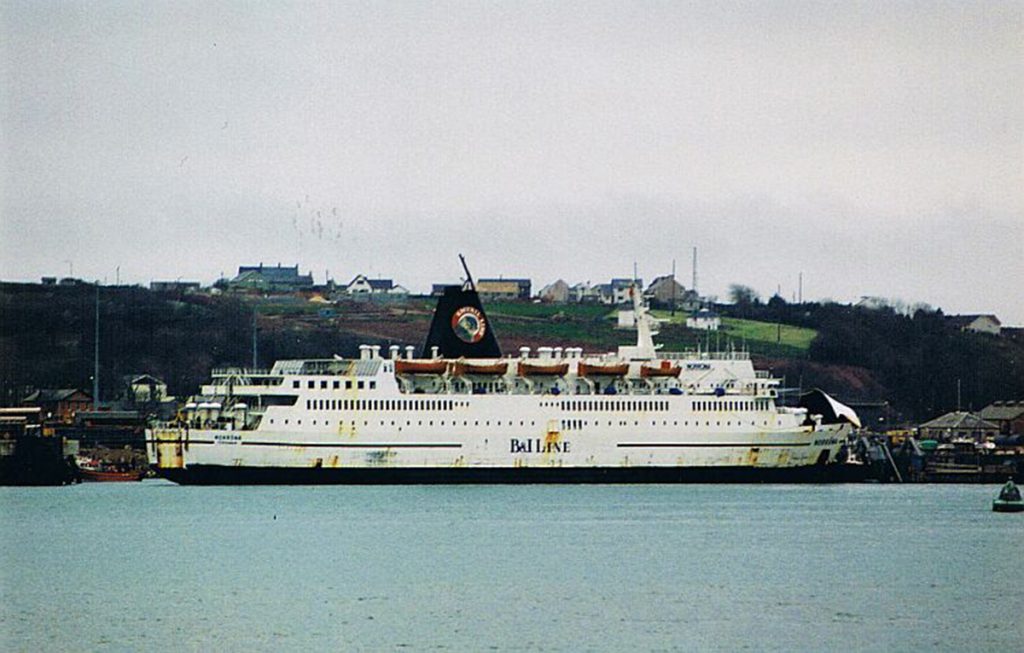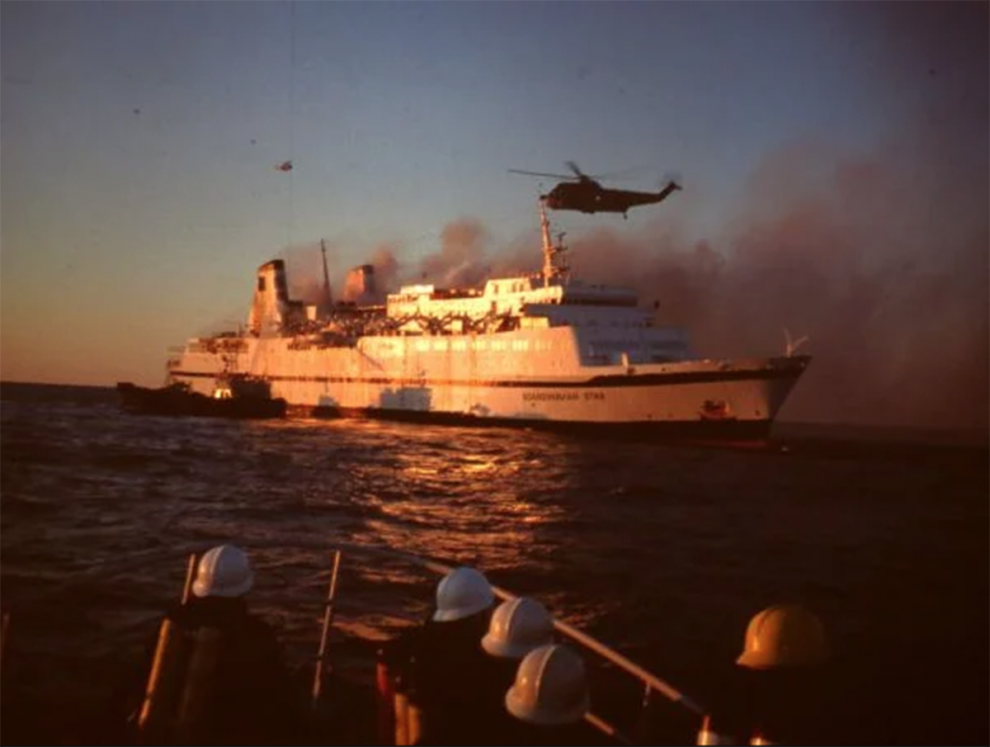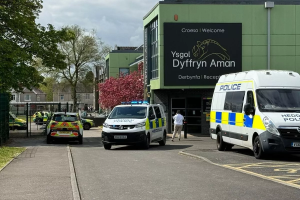IRISH FERRIES, then B&I, first established its Pembroke Dock to Rosslare ferry route in 1979 after a £6 million purpose-built ferry terminal was constructed on the River Cleddau in Pembrokeshire.
For 11 years they operated the route without serious incident, but all of that would change on April 8 1990.
The MS Norröna was launched on February 10, 1973 as the Gustav Vasa in Rendsburg, Germany. The vessel was a car-carrying ferry built for the Malmö in Sweden to Travemünde in Germany route, a route she operated without issue for 10 years.
In 1983 the Gustav Vasa was sold to the Faroe Island-based Smyril Line and renamed the MS Norröna. She would spend the next 7 years covering routes from Tórshavn, the Faroese capital, to the Shetland Islands, Norway, Denmark and Iceland.
The vessel was also often leased to other ferry companies if they needed cover for their routes, this is how the Norröna ended up covering the Pembroke Dock to Rosslare route for B&I in April 1990.
The ferry left Pembroke Dock at around 10pm with 200 passengers and 78 crew members on board and began making the routine 60-mile crossing to Rosslare which, at the time, took about 4 hours.

At around midnight, 2 hours into the crossing, a seaman saw smoke coming from unoccupied cabins on the C-deck of the 9000-ton vessel and raised the alarm, but the ship was already filling with smoke.
Betting shop manager Mr. John Fitzpatrick, 42 at the time, said that he and his family owe their lives to his light-sleeping tendencies as he was awakened by the smell of smoke in their cabin.
Mr. Fitzpatrick, from Golders Green in London, immediately woke his sleeping family, wife Norah, 41, and daughter Clare, 7, told them to get dressed and, together, they began to crawl on the floor to get out of danger.
Once the captain had been informed of the blaze onboard, the ship immediately turned around and returned to Pembroke Dock. But the quick-thinking of the crew, which undoubtedly saved lives, did not succeed in saving everyone and the blaze aboard the MS Norröna ended up claiming one life, the life of a man believed to be a lorry driver, who died of smoke inhalation two decks above where the blaze was started.
George Clarke, coast guard spokesman, said that firefighters and crew controlled the blaze within two hours of receiving the captain’s distress call.
Three RAF helicopters were used to remove injured people and to take firefighters and doctors to the vessel.
31 passengers who were mostly suffering from smoke inhalation required overnight treatment at Withybush General Hospital in Haverfordwest, the day hospital there was opened to deal with the sudden influx of patients, with one woman in her twenties receiving intensive care there.
A second woman also needed intensive care treatment but she was transferred to the West Wales Hospital in Carmarthen.
Passengers with minor injuries were discharged after being interviewed by Dyfed-Powys Police officers who also took their fingerprints to aid their investigation.
B&I’s marine superintendent, Captain Peter McKenna, told Irish Radio, ″The cabins are not normally locked, but the area was not allocated to passengers for this particular sailing. The cabins were close to each other in the same section.″
McKenna said the company believed mattresses or lighted paper started the fire.
Mr. Eifion Pritchard, Assistant chief constable, said that the blaze was being treated as a criminal inquiry.
He said at the time that: ”We do not know the cause at present but there are grounds for suspecting it may not have started accidentally.”
He also refused to comment on reports that the blaze aboard the Norröna started in two separate places on the C-deck of the ferry, which was an area of crew accommodation that passengers could not access.
The strangest aspect of this entire situation is that the fire aboard the MS Norröna was the second of three deadly fires aboard European ferries in just three days.
At 2am on April 7, 1990, a fire was discovered aboard the Scandinavian Star, a ferry travelling between Norway and Denmark which, for various reasons such as malfunctioning fire-doors and language barriers, ended up claiming 200 lives including the life of the arsonist blamed for starting the deadly blaze.
Then the MS Norröna fire took place on April 8.
Lastly, on April 9, a ferry called the Reine Mathilde was 13 miles off the Isle of Wight on the Portsmouth – Caen route when a fire started in the engine room. A crewman fighting the blaze suffered with smoke inhalation and a 66-year-old passenger had a heart attack and died despite the efforts of two doctors, who were already aboard the vessel, to save him.
The MS Norröna was refitted after the fire, in 2004 it was renamed and now operates as a christian outreach vessel.
No-one has ever been charged in relation to the fire aboard the MS Norröna, which claimed one life, despite it being described by Dyfed-Powys Police officers as “not accidental”.

















